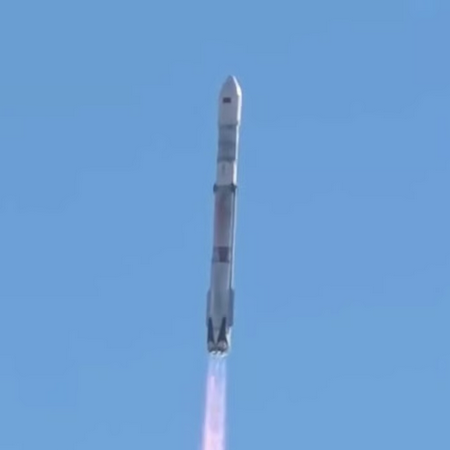China’s Zhuque-3 copycat Falcon 9 reaches orbit on first launch; 1st stage crashes

Screen capture from China’s
state-run press
The methane-fueled Zhuque-3 rocket built by China’s Landspace pseudo-company successfully reached orbit today on its first launch, though the attempt to land the first stage vertically for later reuse failed when it crashed near its landing zone.
The reusable rocket, designed by the Beijing-based commercial space company LandSpace, was launched from the Jiuquan Satellite Launch Centre in China’s northwest at noon on Wednesday. After reaching a low-Earth orbit, the first stage of the rocket – the lower section that lifts the vehicle off the ground – appeared to catch fire in the air before crashing near the target recovery site.
I think a video of that failed landing can be seen here, though I cannot be sure, as it appeared to go up on youtube immediately at launch time, almost too soon.
For the Landspace pseudo-company, getting this rocket to orbit on the first try is a major success. It plans several more launches in the coming months, with each attempting a similar landing. Based on SpaceX’s history in this matter, it should not take it long to achieve its first landing success.
The leaders in the 2025 launch race:
158 SpaceX
75 China (a new record)
15 Rocket Lab
15 Russia
SpaceX still leads the rest of the world in successful launches, 158 to 127.

Screen capture from China’s
state-run press
The methane-fueled Zhuque-3 rocket built by China’s Landspace pseudo-company successfully reached orbit today on its first launch, though the attempt to land the first stage vertically for later reuse failed when it crashed near its landing zone.
The reusable rocket, designed by the Beijing-based commercial space company LandSpace, was launched from the Jiuquan Satellite Launch Centre in China’s northwest at noon on Wednesday. After reaching a low-Earth orbit, the first stage of the rocket – the lower section that lifts the vehicle off the ground – appeared to catch fire in the air before crashing near the target recovery site.
I think a video of that failed landing can be seen here, though I cannot be sure, as it appeared to go up on youtube immediately at launch time, almost too soon.
For the Landspace pseudo-company, getting this rocket to orbit on the first try is a major success. It plans several more launches in the coming months, with each attempting a similar landing. Based on SpaceX’s history in this matter, it should not take it long to achieve its first landing success.
The leaders in the 2025 launch race:
158 SpaceX
75 China (a new record)
15 Rocket Lab
15 Russia
SpaceX still leads the rest of the world in successful launches, 158 to 127.
